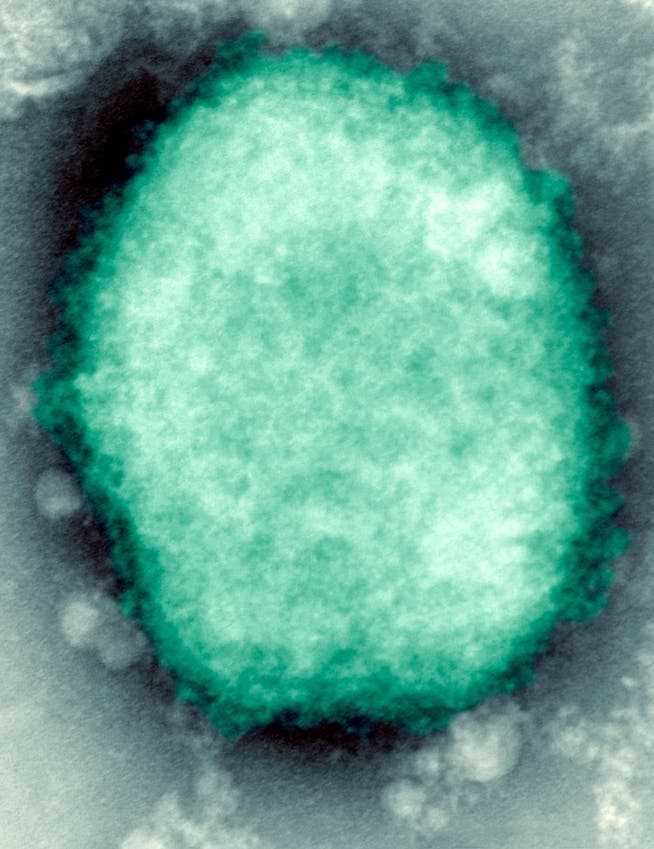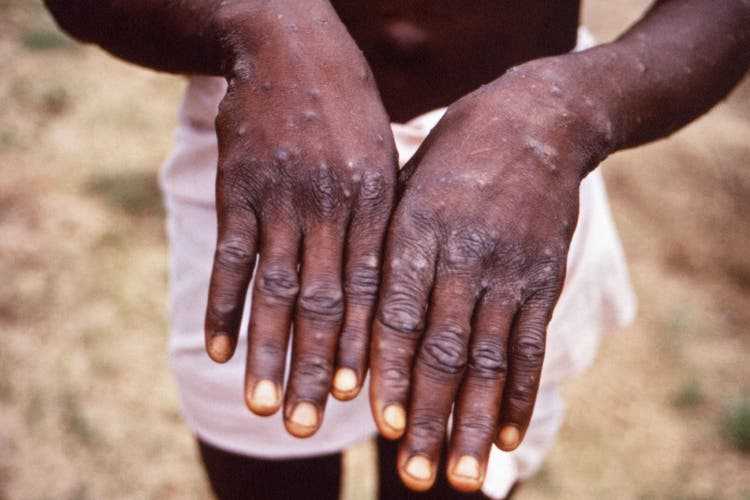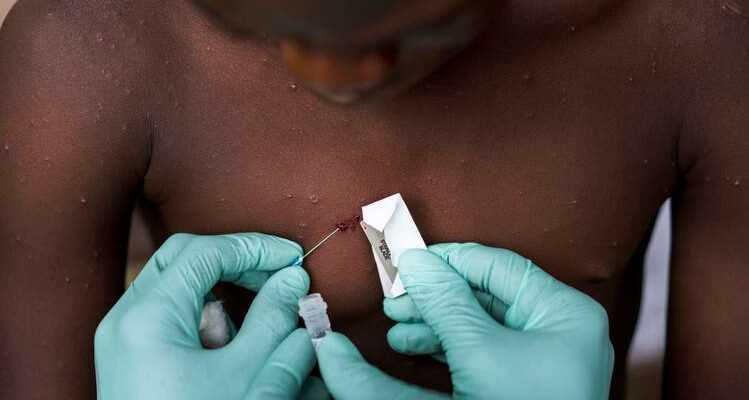The first patient in the UK brought the virus from Nigeria. It is still unclear how the viruses got to Spain and Portugal. The USA, Canada and Sweden also report suspected cases.
Suspected monkeypox: A boy has secretions taken from a pustule for diagnosis. Recorded in the Democratic Republic of the Congo in August 2017.
“It’s rare and unusual,” said Susan Hopkins, chief medical adviser at Britain’s Health Security Agency Rise in monkeypox cases in the UK. The first case was announced on May 7th. Since then, eight more have joined.
However, so far there is little information about how the infected people got infected, the authority said. Two men would have had close physical contact with each other. Two other patients lived in one household. The suspicion of contagion within Great Britain arises.
Human-to-human transmissions are believed to have occurred in Spain and Portugal as well. Those countries reported more than 40 cases midweek. Not all of them have been confirmed in the laboratory yet. As in Great Britain, it is mainly men who describe themselves as homosexual or bisexual who are affected, the authorities said. Monkeypox cases have also been detected in men in Montreal, Canada. And the US reports a suspected case in a traveler returning from Canada. Sweden and Italy have also reported a case.
Close physical contact
The monkeypox virus, related to the smallpox virus, can be transmitted from an infected person to other people through body fluids, especially secretions from the characteristic skin pustules, but also through exhaled saliva droplets and contaminated objects such as bedding. Since close contact between two people is usually necessary for infection, the British authorities and the World Health Organization (WHO) currently consider the risk for the general population to be low.
With the first British patient, it seems clear where he picked up the monkeypox virus. The man was in Nigeria in April and early May. According to the WHO there he developed the skin rash typical of monkeypox. After entering Great Britain, he immediately went to the hospital, where he still needs treatment. The monkeypox viruses were then detected there.

The monkeypox virus in a microscope image.
Nigeria is one of the African countries where the monkeypox virus is endemic. In 2017 there was a major outbreak, since then infections have been detected continuously. Apparently, the number of reported infections with monkeypox viruses has not only increased there in recent years. According to reports, cases in the Democratic Republic of the Congo increased by a factor of 20 between 1980 and 2007.
In recent years, monkeypox infections have repeatedly occurred among returnees from Africa in Europe and the USA. However, the other eight infected people found in the UK have not reported traveling to Nigeria or any other African country. So you must have actually picked up the virus in the UK. Information about the patients’ trips to other countries is not yet available.
Mild illnesses are not always recognized
The first symptoms of monkeypox virus disease are not particularly specific. Affected people develop fever, sore throat and headache, swollen lymph nodes and fatigue. The number of skin pustules that appear in the further course can vary from very few to several thousand. Thus, mild illnesses are not always recognized as monkeypox infection. However, those infected are still contagious.
It is therefore possible that there is now a previously undetected chain of infection in Great Britain or elsewhere and possibly also undetected infected people. The authorities are currently trying to find out.
All nine known patients in the UK, some of whom require hospital treatment, have what is known as the West African variant virus. This is considered to be milder than its close relative, the so-called Central African variant. It is estimated that 1 in 100 people infected with the West Africa variant and 1 in 10 with the other variant die from it. Children and people with a weakened immune system are particularly at risk.

Monkeypox viruses cause a skin rash that is often itchy and sometimes very painful.
According to experts, the accumulation observed in Africa has two causes. First, after human smallpox was eradicated by an extensive vaccination campaign from 1980 onwards, smallpox vaccinations were gradually phased out worldwide. But the human smallpox vaccine also provides up to 85 percent protection against monkeypox infection. This is now missing worldwide among the under 50-year-olds.
Second, more and more people come into contact with wild animals or their meat and other parts through hunting and markets. Contrary to what its name might suggest, monkeypox viruses are not only found in monkeys, but also in squirrels, rats and other rodents in forests.
Vaccination against smallpox protects
As humans have become more mobile, viruses that have jumped from wild animals to humans can spread much faster. Research is also underway to determine whether the monkeypox virus may have changed and is now more easily transmissible between humans.
There is no specific therapy for monkeypox. Most infections heal on their own anyway. In the very first phase after infection, a human smallpox vaccine can be given as post-infection protection. It should alleviate the course of the disease. The UK has been offering this vaccine to some healthcare workers since Thursday. In addition, there are some antiviral drugs that have been able to fight the monkeypox virus in animal experiments and cell culture tests. One of them has been approved in the EU since January 2022.
